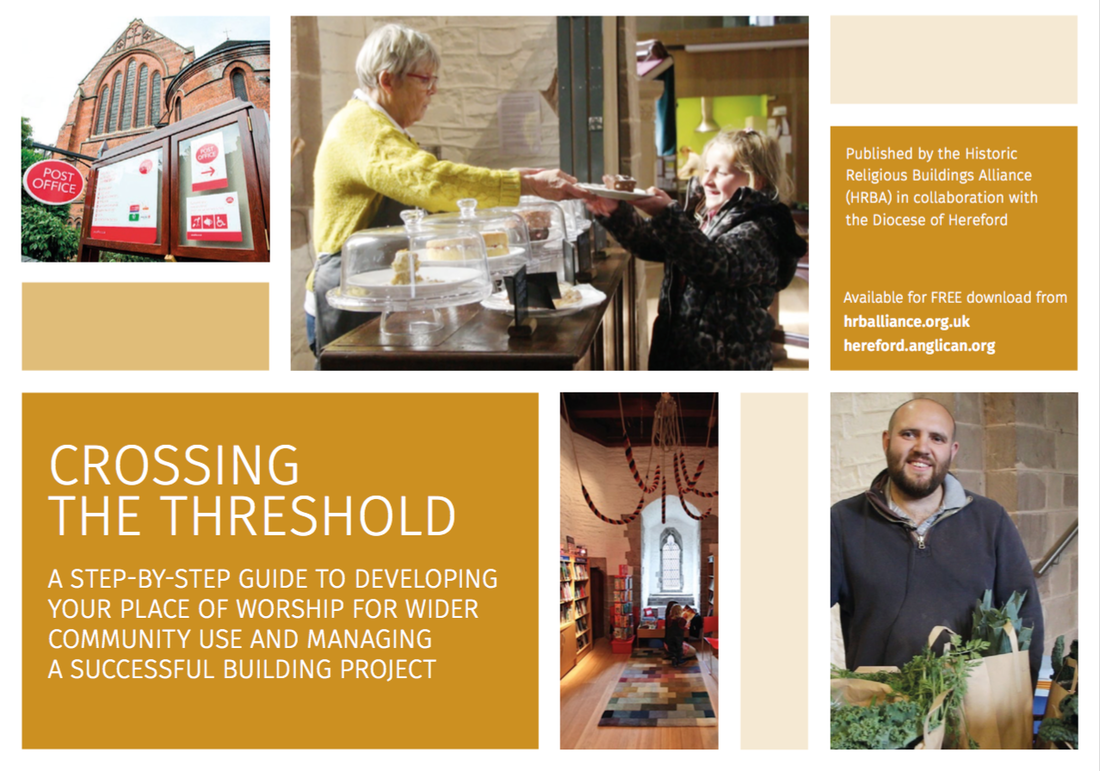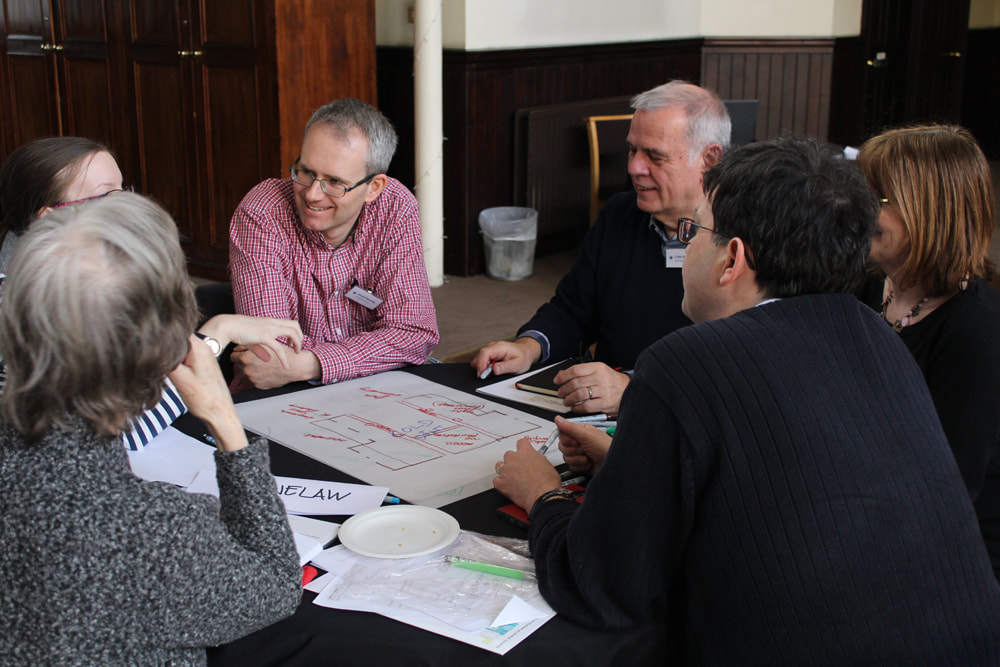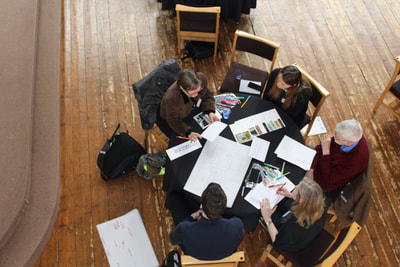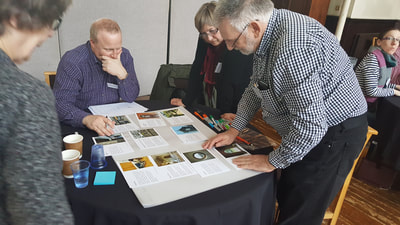On 3 November 2017, an updated and expanded version of the Crossing the Threshold resource was launched at St Martin in the Bullring, Birmingham.
Its full title is ‘Crossing the Threshold: a step-by-step guide to developing your place of worship for wider community use and managing a successful building project’ and that describes exactly what we hope it will offer places of worship across the UK. This toolkit is a revised and updated version of something which first appeared in 2005, developed by the Diocese of Hereford.
Since 2005, many more churches have been re-evaluating how they relate to their communities and across the country are adapting their buildings to meet new needs and make our churches fit for the 21st century. Parishes are coming up with creative ways of using their buildings to increase footfall and to open up opportunities for trading and social enterprise, with concepts ranging from community cafes, lunch clubs, libraries and soft play, to simply making the space suitable for renting out to charities and other groups. It is about building new relationships with those in our communities and strengthening old ones.
BUT, and it is a big BUT, developing and implementing a church and community project and/or a church repair project is complex. Many of these buildings are also listed or at least historic structures which brings with it the usual issues raised when adapting an historic building, but as church, there is an additional sensitivity because these are buildings which many view as sacred places, and which also are greatly loved by their local communities even if they – up until now - hardly cross the threshold. There is the need to ensure that the liturgical requirements of being a place of worship are balanced with community use. And that is on top of the matter of managing a large budget where the funds are probably coming from many different sources!
These projects require huge amounts of time, energy, tenacity and at times sheer determined stubbornness. The overall aim of the Crossing the Threshold resource is to try and prevent each congregation which embarks upon a project having to ‘reinvent the wheel.’
Divided into 3 sections, the first section is called PREPARING THE GROUND which covers all the things you need to do before you go anywhere near an architect let alone put a spade in the ground! It covers Developing your Vision, Undertaking a Community Audit and Consulting with the Community, Developing a Team and Assessing your Skills and Abilities and Governance – Choosing the Right Organisational Structure.
The second section is LOOKING AT YOUR OPTIONS. This is when a Project Teams should start talking to others and testing out their ideas and importantly getting feedback and advice from professionals including your DAC or equivalent. This is when a project needs to be sure that any alterations are sympathetic to their building and will really answer their needs ie: Statements of Need and Significance. The two chapters here are Developing your Ideas – Options Appraisal, Feasibility Study, Architect’s Brief and the Design Stages followed by Balancing the Need for Change with Heritage and Liturgical Considerations – Legalities and the Church Planning Process
The Third Section is the longest and is all to do with DELIVERING YOUR PROJECT.
It includes project planning and we have given ways of approaching this. We have tried to demystify writing a business plan, managing cash flow, and also provide solid practical advice on fundraising- three whole chapters! There is also a chapter on Ensuring your Project is Sustainable and of course the Final Stages – Claiming Money, Celebrating, Impact and Evaluation.
There are a lots of new case studies which tell the stories of those who have ‘gone before’. Case studies are a vital part of this resource. There isn’t a fool-proof template for all of this and every case is different. Learning from the challenges others have faced and lessons they have learnt is so important.
A lot of the guidance is based on the experience of those who have completed projects and thus the toolkit has incorporated best practice learnt from the experience of more recent projects. We have listened to common challenges faced by church projects and the aspects which they found the most difficult and the list of things ‘they wished they had known before we started’ and ‘those things with hindsight we would have done differently’. Much of this is passed on as the Top Tips at the end of each chapter.
And where can you find it?
https://www.hereford.anglican.org/Crossingthethresholdtoolkit/
Becky Payne is Development Officer at the Historic Religious Buildings Alliance and a consultant on the Empowering Design Practices project. The Crossing the Threshold toolkit was written by Becky with contributions from others.





 RSS Feed
RSS Feed